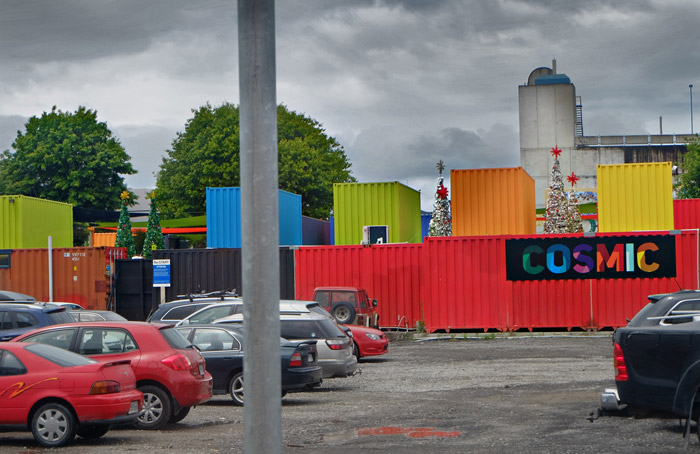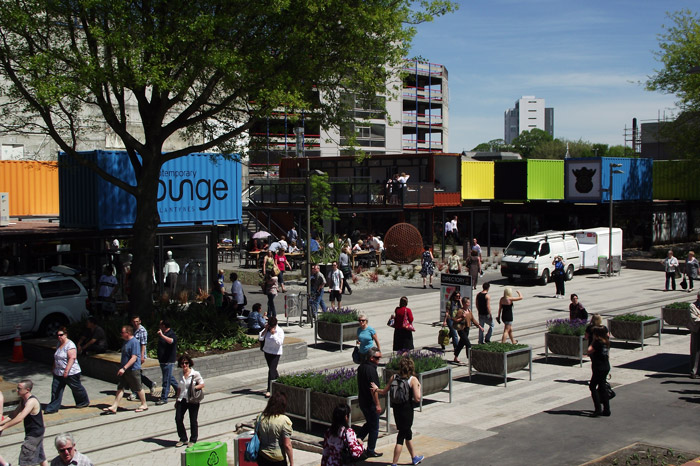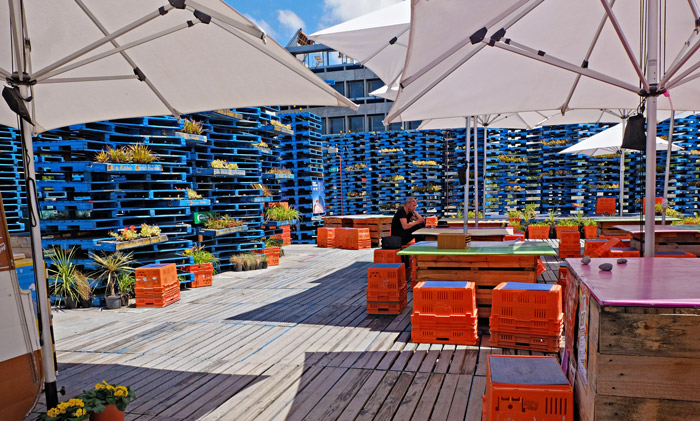The Hole in the City #2
Jan 12, 2014
 The earthquake that devastated Christchurch wasn't "the big one" there; it was just an aftershock, one of more than 8,000 aftershocks of magnitude 3.0 or more during the months following a massive magnitude 7.1 quake in September 2010.
The earthquake that devastated Christchurch wasn't "the big one" there; it was just an aftershock, one of more than 8,000 aftershocks of magnitude 3.0 or more during the months following a massive magnitude 7.1 quake in September 2010.
The big one caused terrible damage to the city and its suburbs, but mostly to older buildings; most modern construction survived more or less unscathed, thanks to New Zealand's strict seismic building codes. And no one died that day.
Although all of New Zealand is at elevated risk of earthquakes, Christchurch was not considered at especially high risk. The 2010 quake came pretty much out of the blue, rupturing a fault west of town that was hitherto unknown to geologists.
The aftershocks that followed were unnerving, to put it mildly, shaking the city day after day, often many times a day. They threatened to destabilize already damaged buildings, and they discouraged any and all efforts to start the rebuilding process.
The February 2011 aftershock that finally flattened Christchurch was different from the others in several ways. Although its magnitude was measured at just 6.3, much weaker than the original quake, its epicenter was very close to the center of town, just 10 km east of downtown. It caused movement along a shallow fault, only 5 km below city streets. And most devastating of all, this movement was largely up-and-down in nature, as opposed to the sideways shaking characteristic of the vast majority of quakes around the world.
Ground movement during the February 2011 quake was recorded at numerous seismic stations around town. Acceleration reached an unheard-of 2.2 times the force of gravity, a violent vertical wrenching that even strict seismic building codes had not contemplated.
After it hit, city officials had to cordon off the downtown area–the Red Zone–with its perimeter patrolled by armed soldiers. Entire residential neighborhoods were emptied out and slated for demolition; some were deemed unsuitable for rehabitation ever again. At least 1,000 commercial buildings and 7,000 houses were completely destroyed. No modern city has ever suffered more devastation from any earthquake.
The aftershocks continued, but now they were only one of many factors slowing or stalling redevelopment. First, all the ruined buildings had to come down, and all their rubble had to be carted away. Heavy equipment and demolition teams soon arrived in Christchurch from as far away as Ireland, but they couldn't work fast; even if financing and permitting went smoothly, which they never did, extreme caution was needed at the work sites to protect weakened structures nearby.
The vacant lots that gradually replaced rubble throughout the city often became parking lots. In fact, parking is easy now even in the heart of downtown. Not that there's much reason for many people to drive downtown these days–the old shopping mall is gone, there are only a handful of restaurants functioning, the theaters and office buildings and almost all the hotels are gone. City Hall and most other government buildings are emptied out.
Given all that newly empty land in the city center, it was inevitable that people would come up with ideas for temporary uses–popup structures built with readily available materials to bring back a little life to downtown Christchurch.
The photo above shows the Re:Start Mall, as seen from a parking lot in back; the stores and cafes that have sprung up on the site of a ruined shopping center are all made out of shipping containers.
Below, shoppers and tourists visit the new mall. And below that is the Pallet Pavilion, a new downtown cafe and performance space built out of wooden pallets, with plastic crates for seating.

